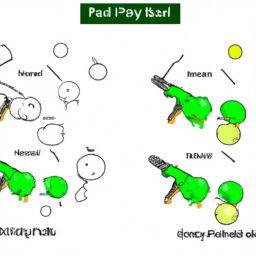How Paintball Guns Work A Guide
How Paintball Guns Work
How Paintball Guns Work A Dive into the Basics
Paintball firearms are a favorite among outdoor enthusiasts and professional gamers alike. Taking part in this exhilarating activity requires an understanding of how these unique weapons work and the parts that comprise them. In this article, we'll explore the basics of paintball guns, starting with an overview of operation, then moving to the main components and their respective roles.
Operating Paintball Guns
Paintball guns are designed to fire round, paint-filled projectiles via pressure-driven propulsion. As air or gas is forced into the chamber of the gun to increase the pressure, it propels the paintballs along the gun's barrel. This process is generally repeated in rapid succession by pump-action or semi-auto/full-auto capability. Paintball guns can further be classified by their power source, most of which require either carbon dioxide (CO2) or high-pressure air (HPA).
The Main Parts
Chamber
The chamber is the part of the gun where air or gas is forced in to push out the paintball. It holds the propulsive gas and is often pressurised to different degrees depending on the model and power source.
Barrel
The barrel is a metal tube responsible for guiding the paintball out of the gun and accurately towards the target. The barrel often features baffles and ports that help keep the paintball inside and taper it down for an improved shooting experience.
Bolt
The bolt is the sliding component of most paintball guns. This part is ligthweight and spring-driven, pulling the paintballs from the hopper as they're fired.
Trigger
The trigger is the part of the gun that allows you to fire paintballs. It needs to be lightly pulled to set off the paintball firing sequence.
Hopper
The hopper is the container that store the paintballs ready to be fired. It's positioned near the chamber and feeds paintballs to the bolt as it slides, propelling the projectile through the barrel.
Grip
The grip houses all of the gun components and provides the user with a firm and comfortable hold of the gun. In addition to the trigger, grip also houses the safety switch and other parts.
Recap
To recap, paintball guns operate by forcing air or gas into the chamber to propel paintballs down the barrel in rapid succession. Paintball guns can typically be classified by their power source and the main parts include the chamber, barrel, bolt, trigger, hopper, and grip. Knowing how each of these operate gives paintballers an advantage in the field.
When playing paintball, it's essential to know how the gun works. From understanding how the different parts of the gun come together to knowing the function of each component, having this information can make all the difference in the game. With the right knowledge in hand, paintballers can stay one step ahead of their competition.

Previous Page
Next Page
